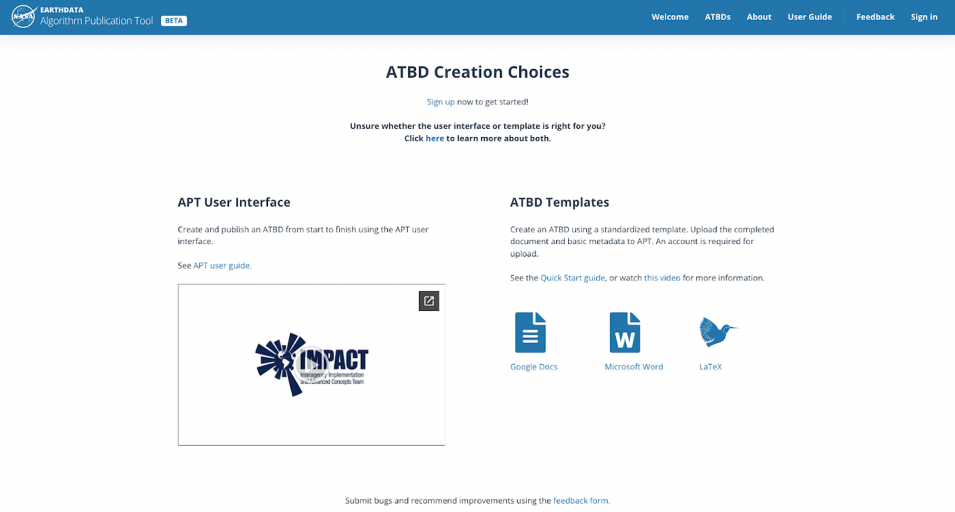Last summer, we introduced the Algorithm Publication Tool (APT): an authoring, publishing, and central repository environment for creating Algorithm Theoretical Basis Documents (ATBDs). These documents are needed for communicating the theory behind some of the NASA data products available to users. Since then, the APT team has added several new features and capabilities, making the tool more user-friendly and accessible.
Building on user feedback, the team added a template option for writing an ATBD outside the system. Templates are available for Google Docs, Microsoft Word, and LaTeX. This new capability ensures that users can write their document offline and in a familiar environment using the latest features in collaborative document authoring. When the user has finished the document, the ATBD is uploaded in minutes to the website to be reviewed for publication. All users also have the option of using the APT interface for document development, which allows them to collaborate with colleagues to write, edit, review, and publish an ATBD.
